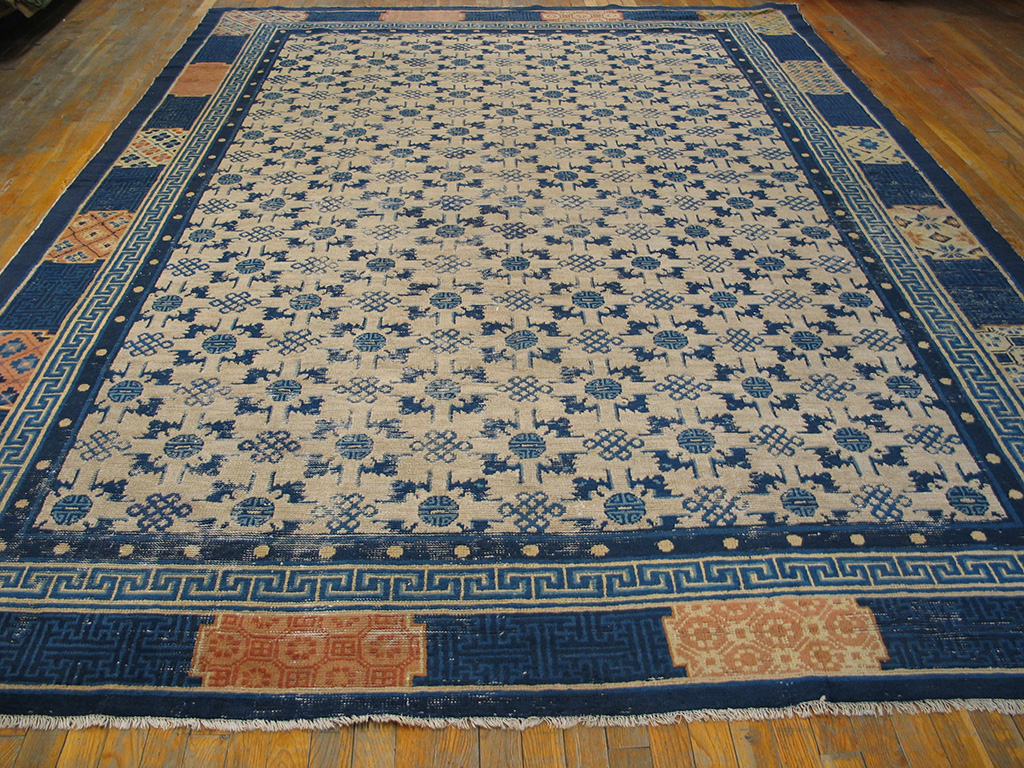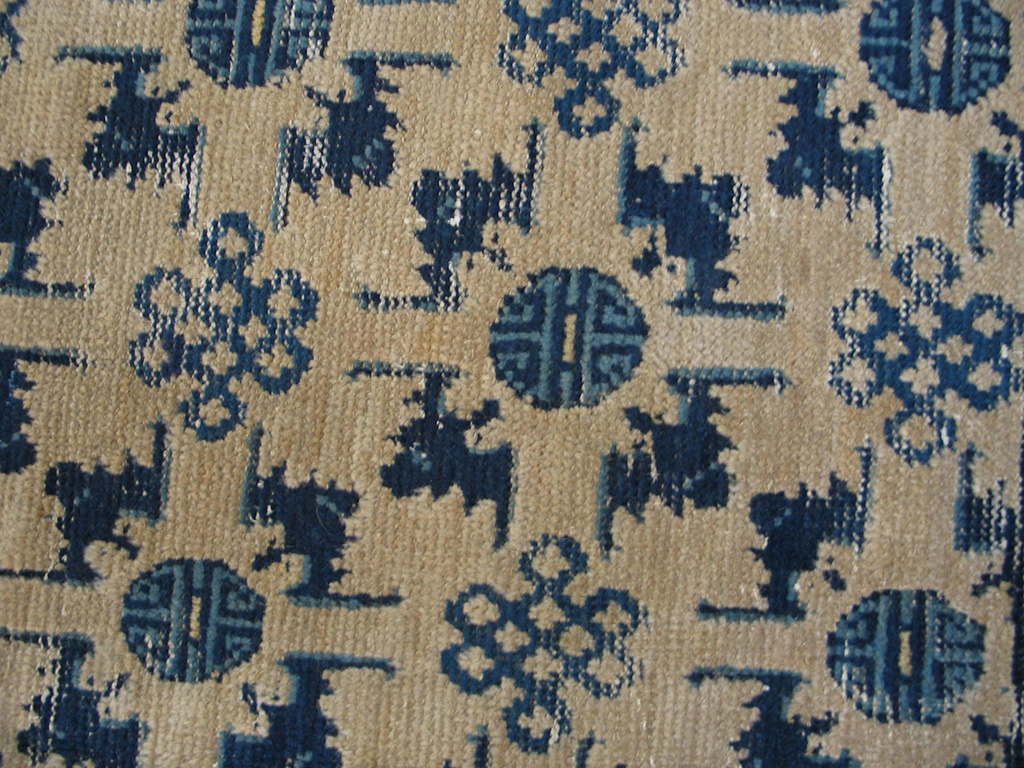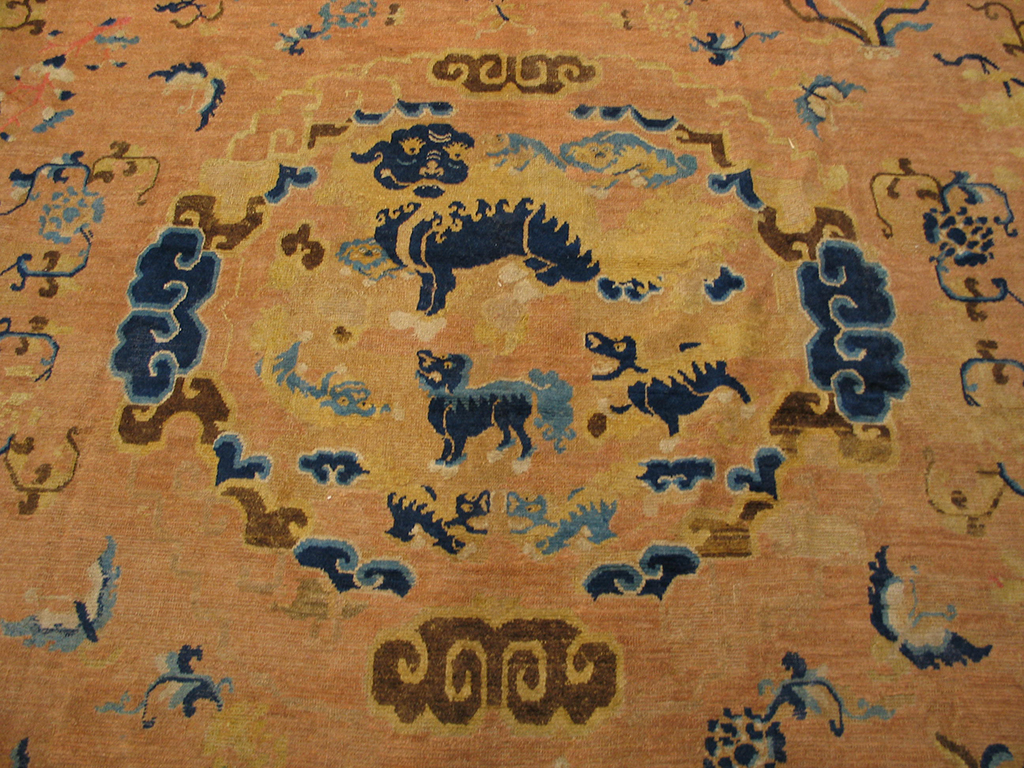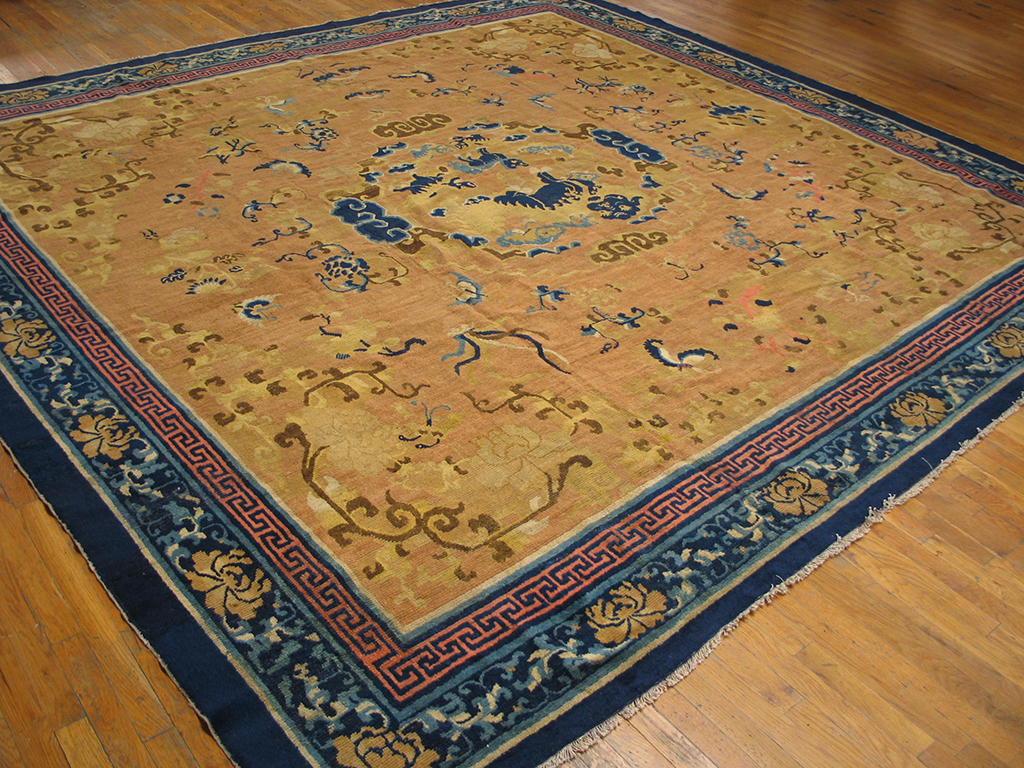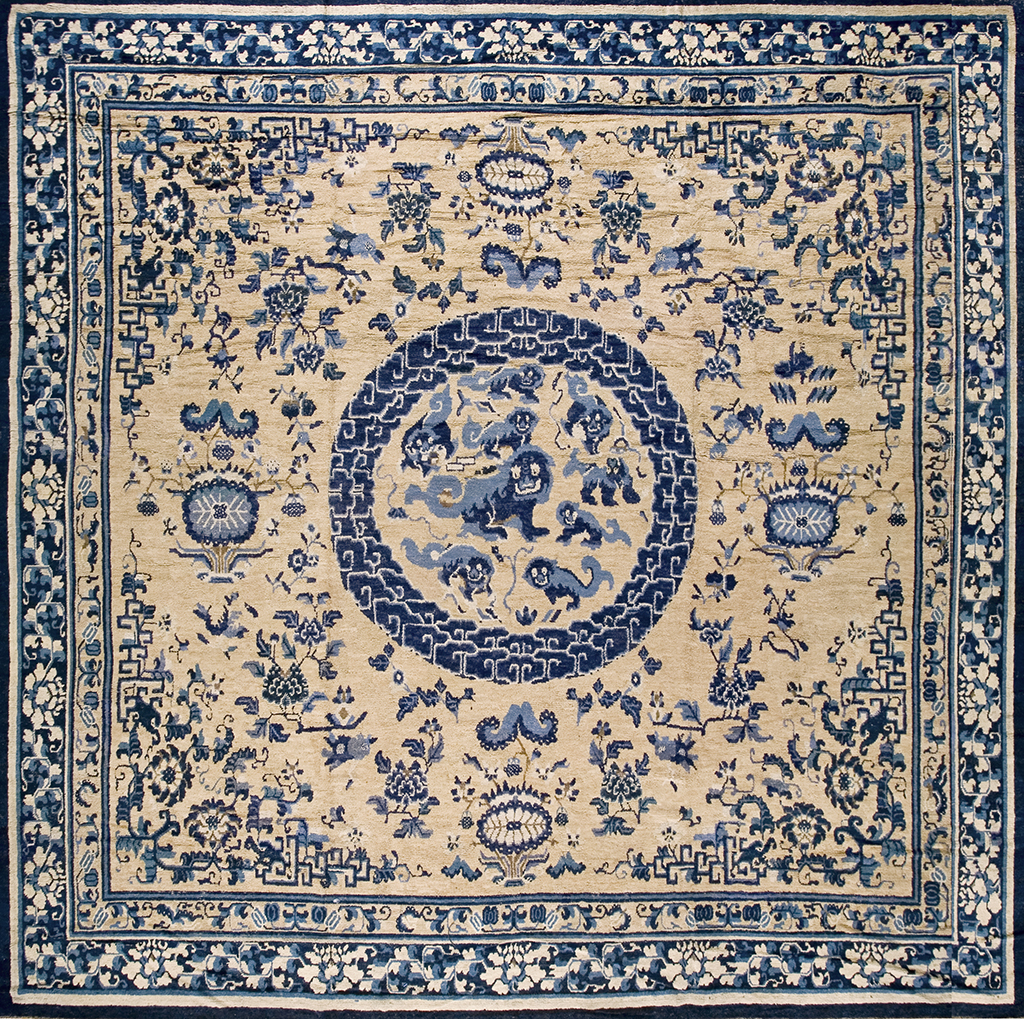24013
Ningxia North Central China
17’10” x 17’10”
C. 1850
Warp: cotton, off white, handspun, Z-4-S
Weft: cotton, off white, handspun, 2 shoots alternating
Pile: wool, 3 strand, handspun
Knot: asymmetric, open left, 48 knots per square inch
Sides: one cord, offwhite cotton wrapped
End: no original finish
This is a particularly large example of a Mandarin official’s carpet with a central medallion displaying nine lion dogs collectively symbolic of success on the national Chin Shih examination which provided guaranteed entry into the national administrative bureaucracy and the wealth devolving therefrom. The nine lion dogs are a rebus for success in the national bureaucracy. The apricot ground features 11 full or partial rows of tree peonies, flower and stem. This carpet is particularly large and clearly was made for a highly placed official or the wealthy family of a recent graduate of whom great things were expected. The principal was probably Buddhist as indicated by the embroidered ball and precious objects in the medallion. The clouds surrounding the lion dogs form a broken, polychrome circle rather than the usual continuous cloud wreath. This is one of the several features indicating a bespoke order rather than a piece made for the market.
Another indicator is the exceptional size, as the standard square Ningxia Mandarin carpet is about 12 to 14 feet square. The main border continues the color combination, with a now apricot ground and peonies among floral arabesques. The blue inner stripe is unusual with butterflies alternating with paired peaches of longevity. Surrounding the whole is a wide, dark blue plain band. The drawing is balanced in all directions, with nothing cut off or left incomplete.
The medallion has three peony rows below and four above, but it seems well centered. To have added another row at the bottom would have been technically more correct, but it would have made the carpet less than square, and squareness was an essential requirement. The notion that these square carpets were made for conforming dais platforms can be dismissed on an even cursory look at traditional Chinese houses. There are no daises. The only dais platforms are in the Forbidden City Imperial throne rooms and this is not an Imperial rug.
The condition is extraordinary. Such carpets were woven for the largest room of the house, the ancestor hall, and brought out only on important occasions like funerals, weddings, visits or holidays. Otherwise, they were rolled up and stored away. The handle is particularly thick and solid, and indicates a turn away from the softer and looser characteristic earlier Ningxia weave. Very few large Ningxia carpets are known and even fewer are in this exceptional state of perfect preservation.
The peony is a traditional Chinese carpet design, but it is usually combined with butterflies, bats, fretwork or other elements. The close and allover display of peonies is very unusual. The flower heads reverse direction at the approximate horizontal middle of the carpet. The carpet was originally more of a lacquer red as indicated by the verso. The logwood dye has, as is usual for Chinese carpets, changed to a mellow apricot.
As is standard, Ningxia carpets are not dated or inscribed, and it would be impossible to ascertain the original patron of the piece. In any case, his dwelling would have been most substantial with an ancestor hall twenty or more feet in width. The intended owner would have been highly placed in any case.
The exact workshop practices of the dozen or so workshops active at the time are not known, but the weavers, Hui Muslims, worked on vertical looms. Whether they employed partial cartoons for this exceptional piece is unknown, but it surely was well supervised. The central medallion probably had some sort of graphic guide, however.






Written by Dr Peter Saunders.
To view this rug on our website, click here.









